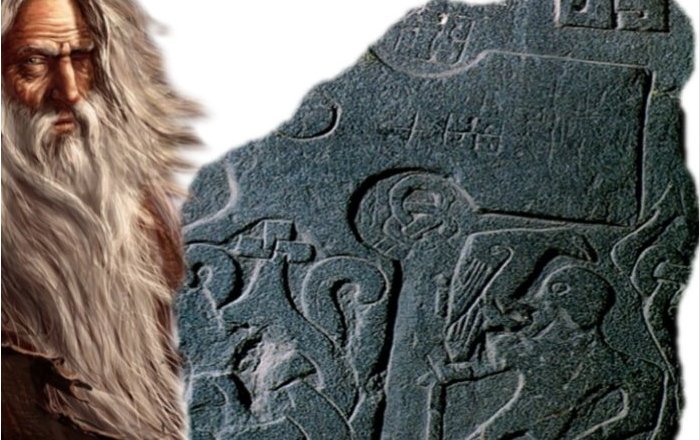A. Sutherland - AncientPages.com - Among many colorful epithets of the great god, Odin was "Lord of the Spear." Odin owned Gungnir (in Old Norse means "swaying one"), a magical weapon that was unstoppable in its fight and governed the fortunes of war.
Credit: Stock Adobe - bourbonbourbon
This divine weapon would quickly strike whatever he aimed at, and it always flew straight to its target and never missed it.
Brokk and Eitri were well-known craftsmen among the dwarves.
According to Snorri's Edda, Gungnir, the ship Skidbladnir, and the goddess Siv's golden hair were manufactured at the request of Loki by the dwarf artisans Brokk and Eitri. They were sons of Ivaldi and lived in the underground cave in Svartalfheim.
Another version says that after drinking from Mimir's Well, Odin broke off a branch of the sacred tree Yggdrasil, which overshadowed the spring, and made his favorite weapon - the spear Gungnir.
In 'Sigrdrivomal,' a part of the Poetic Edda text in Codex Regius, a sailor mentions that Odin carved runes on Gungnir's cape, and they held magical powers.
Sometimes, Odin entrusted to Hermod's care the precious spear Gungnir, bidding him to cast it over the combatants' heads about to engage in battle.
As the god of war, Odin usually carried the infallible Gungnir spear in his hand, and this fantastic weapon was so sacred that an oath sworn upon its point could never be broken.
Gungnir, which Odin used on the battlefield, symbolized the initiation of war. He threw it above the heads of the army of enemies. Legends say that if they fell, they became an offering to Odin. Warriors killed by a spear became part of the Einherjar, his troop of warriors in Asgard.
Left: Odin, god of war; Right: 10th-century panel from a Viking-era cross on the Isle of Man. It depicts Odin with his spear and a raven on his shoulder; they meet the wolf Fenrir, and this monstrous creature will devour them.
Gungnir was slender and very strong, and it became Odin's favorite weapon, which the god of war and magic used to provoke or reduce disagreements and conflicts.
Odin cast his spear during the war between the Aesir and the Vanir, and his skills were unlimited. The battle raged until both armies grew tired of the slaughter. But amazingly, neither side could win or lose, so this old tradition continued for a long time.
According to an old tradition, Norse warriors threw their spears at the start of a battle to invoke Odin's protection in war.
This particular spear is of great importance at Ragnarok, the battle on the Last Day. Odin's magic weapon Gungnir and Draupnir ('Dripper'), a fabulous golden ring from which eight equally heavy rings drip every ninth night, are essential attributes for Odin's ability to uphold his power and position as king of the Aesir.
Part of helmet, thin, pressed bronze plate. Found in Vendel. Turning time. The figure possibly represents Odin. Source: Oscar Montelius, Om lifvet i Sverige under hednatiden (Stockholm 1905) s.98 - Public Domain
There are several versions of how Odin obtained the mighty and sacred Gungnir. According to one myth, dwarves forged it from sunlight as a gift to Odin. Another tale says Gungnir was among several objects forged by the dwarves as part of a contest arranged by the trickster god of Norse mythology, Loki.
Then, Loki gave it to Odin, saying:
"I take this spear called Gungnir and give it to you. It is a unique spear in that when aimed and thrown, it never misses its mark. And any oaths sworn with a hand upon its point cannot be broken."
Written by – A. Sutherland AncientPages.com Staff Writer
Updated on January 11, 2024
Copyright © AncientPages.com All rights reserved. This material may not be published, broadcast, rewritten or redistributed in whole or part without the express written permission of AncientPages.com
Expand for referencesReferences:
Gaiman N. Norse Mythology
Hedeager L. Iron Age Myth and Materiality
